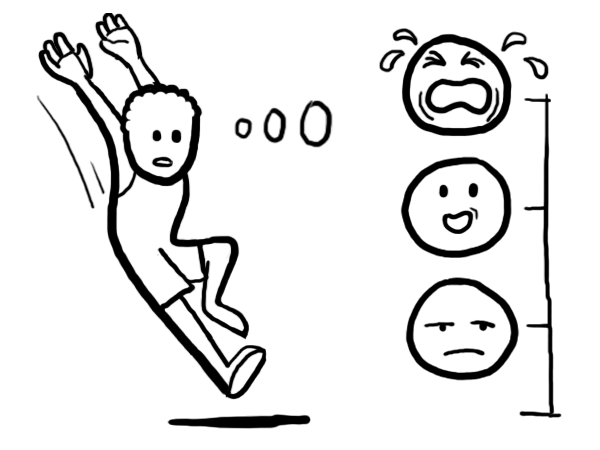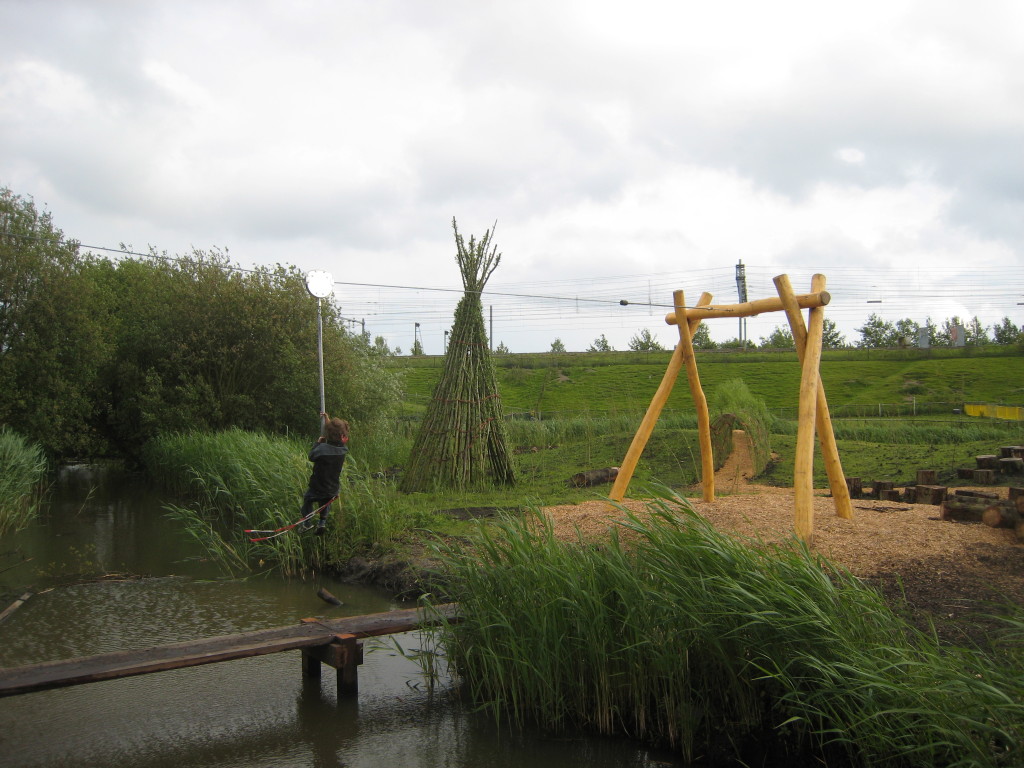Think back to when you were a child – what was your favourite thing to do? Were you indoors under supervision, or outside playing with friends? Which places did you get the most enjoyment out of? Were they prescribed play environments, or natural environments? Did you spin wildly on a tire swing at what felt like the verge of control, or achieve great engineering feats as you balanced found objects to construct a fort?
Most people remember childhoods spent wandering their neighbourhoods exploring local landscapes and natural environments. This kind of childhood involved lots of chances to engage in outdoor free play and risky play – opportunities that are becoming increasingly rare.
Free play is a necessary ingredient in the development of children. What is free play? It is play where the child can decide what to do and how to do it. It can involve physically active play (e.g., running around in a game of tag), object play (manipulating objects and toys), and pretend play.
Recent research suggests that access to risky play is beneficial to children’s development. Children need access to free and risky play in nature and the outdoors, and an opportunity to explore thrilling and exciting environments.
Why do we need risky play? Not only does engaging in risky play lead to a less sedentary generation of children, but it benefits their emotional and social health as well. Risky play also helps children to figure out how their bodies and the world works, helping them to evaluate risks and develop appropriate responses.
It is critical that play environments that support healthy development through become part of everyday experiences on the school ground. The goal is to manage hazards/dangers (definition: Situations where the child may not recognize the danger or be able to manage it, such as a bush with spike branches at eye level) to reduce the likelihood of serious injury, while maintaining the risks and allowing them to explore their limitations through challenging play environments. Most children are more capable than we tend to give them credit for at evaluating their own abilities and the level of risk they feel comfortable taking on.
The design of school environments needs to take this into account. Typical playgrounds have tended to be excessively managed, relatively boring environments, marked by colourful plastic and minimal heights intended to eliminate risks. There should be room to run freely, objects that can be manipulated, and a range of elements that allow children to use their imaginations. A castle doesn’t have to look like a castle to become one in a child’s imagination, and one child’s castle may be another’s space shuttle.
The Play Safety Forum’s Risk Benefit Assessment Tool is a useful approach to help identify and manage hazards, as well as determining the relative benefit of risks. This tool aims to keep children as safe as necessary, rather than as safe as possible. You can access the manual and tool at: http://www.playengland.org.uk/resources/managing-risk-in-play-provision-implementation-guide.aspx


